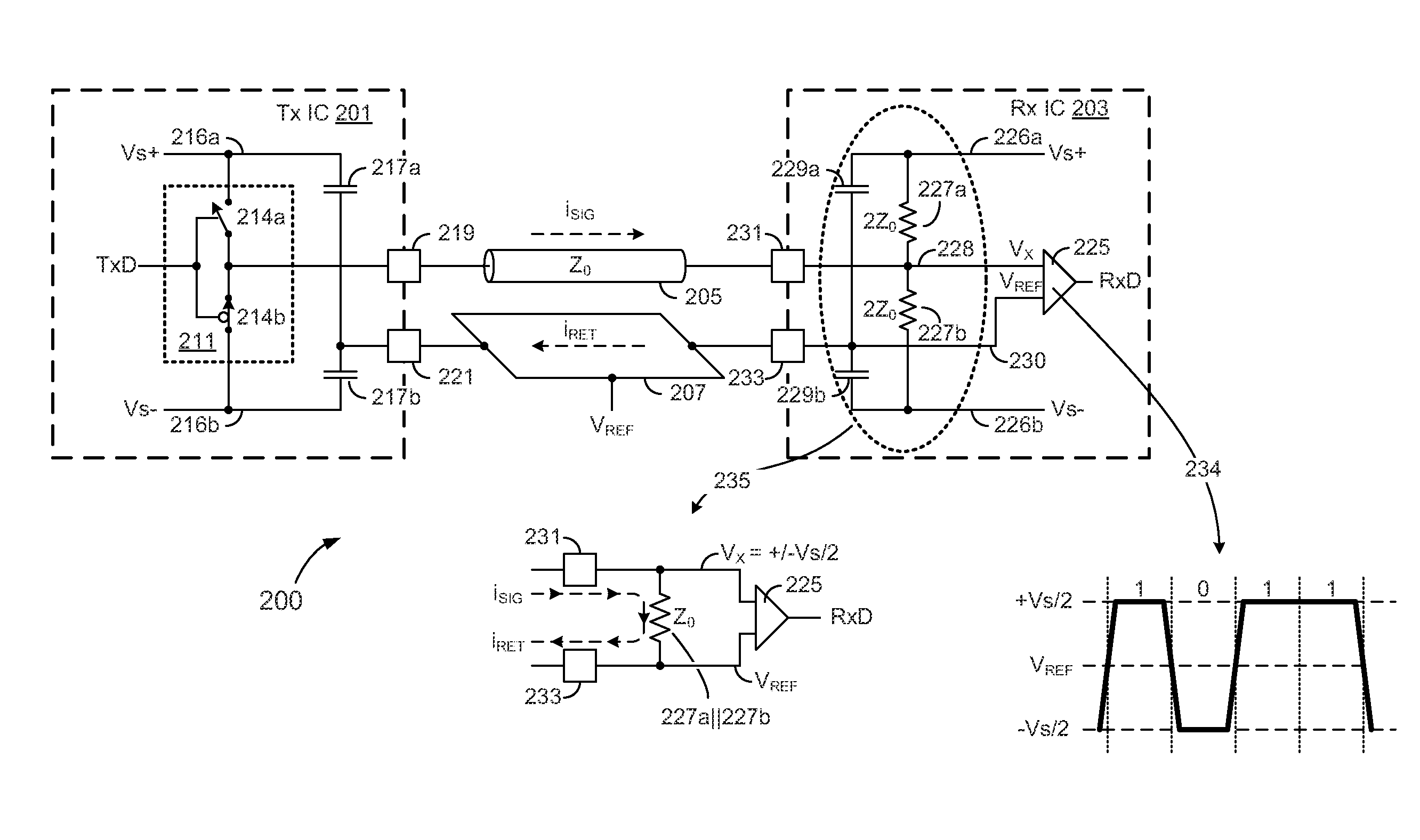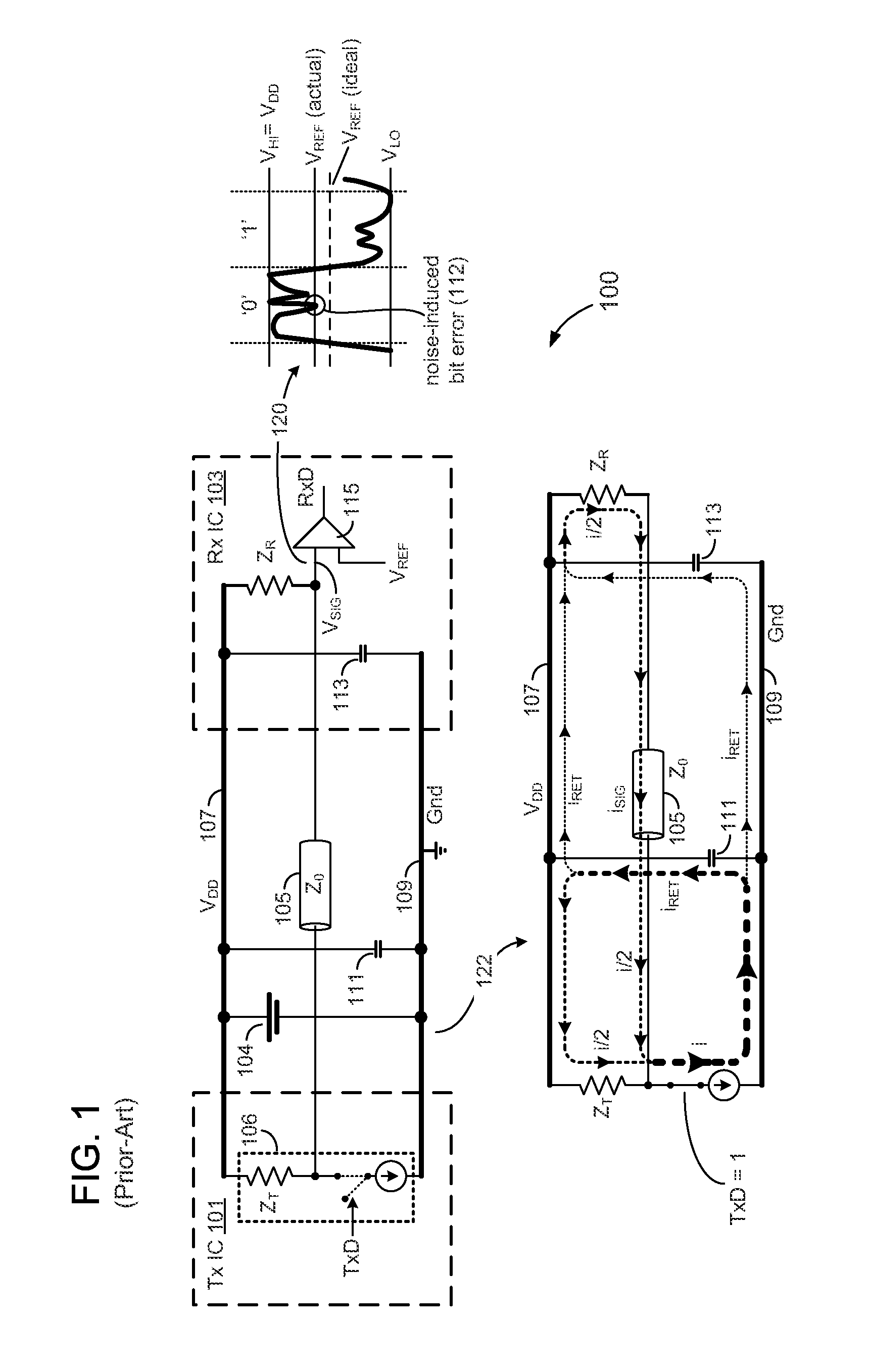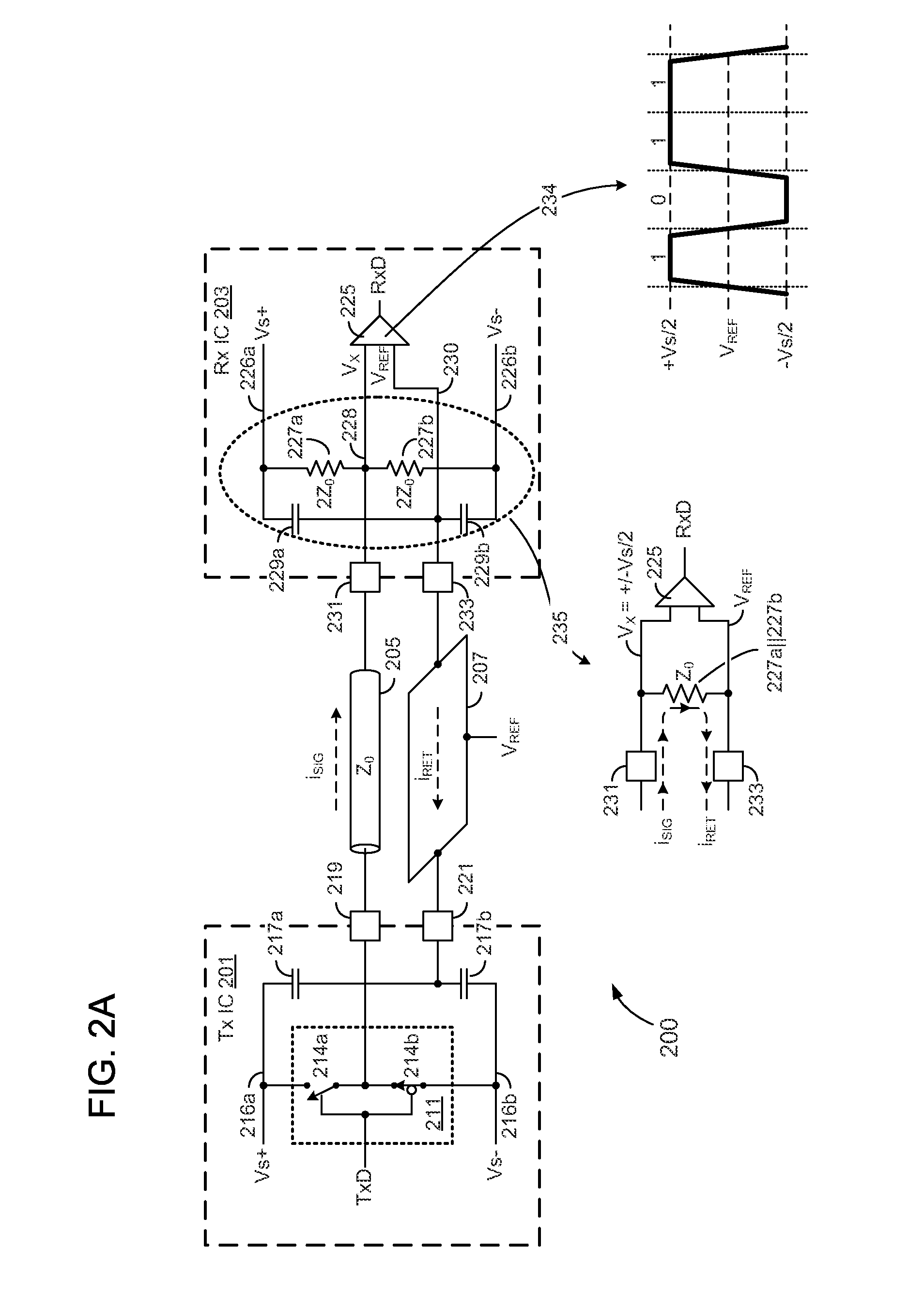Single-ended signaling with parallel transmit and return current flow
a transmit and return current and single-ended technology, applied in the field ofsignal, can solve the problems of reducing the signaling margin, preventing the adoption of two conductors per signal, and preventing the introduction of uniform impedances,
- Summary
- Abstract
- Description
- Claims
- Application Information
AI Technical Summary
Benefits of technology
Problems solved by technology
Method used
Image
Examples
Embodiment Construction
[0016]A single-ended signaling system in which transmitted and returned signal currents are enabled to flow substantially parallel to one another and thereby maintain a substantially uniform impedance along the length of a single-ended signal conductor is presented in various embodiments. In one embodiment, a reference plane is disposed substantially parallel to a single-ended signaling conductor and coupled to the signaling conductor within a signal-receiving IC and coupled to signaling supply voltage nodes within a signal-transmitting IC. By this arrangement, an AC current flowing to (or from) the receiving IC via the signaling conductor is conducted to the reference plane, thereby enabling a matching AC current to flow back to (or back from) the transmitting IC along a single path that is substantially parallel to the signal conductor.
[0017]In a more specific embodiment, the reference plane is coupled to a reference voltage input of a signal-receiving circuit within the receiving...
PUM
 Login to View More
Login to View More Abstract
Description
Claims
Application Information
 Login to View More
Login to View More - R&D
- Intellectual Property
- Life Sciences
- Materials
- Tech Scout
- Unparalleled Data Quality
- Higher Quality Content
- 60% Fewer Hallucinations
Browse by: Latest US Patents, China's latest patents, Technical Efficacy Thesaurus, Application Domain, Technology Topic, Popular Technical Reports.
© 2025 PatSnap. All rights reserved.Legal|Privacy policy|Modern Slavery Act Transparency Statement|Sitemap|About US| Contact US: help@patsnap.com



